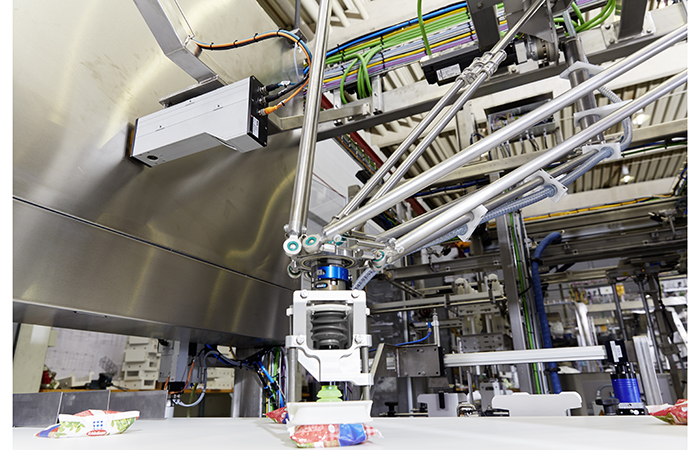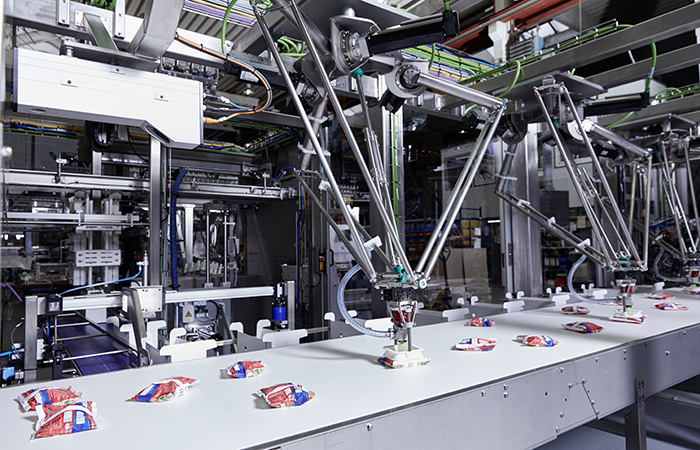
Soft, squidgy mozarella cheese balls slither around a brine-filled, sealed, glossy tubular bag. Could there be a tougher challenge than automating the secondary packaging of these delicate individual portions?
Such was the task facing engineers at the German packaging machinery manufacturer A&F, Automation & Fördertechnik, who worked with specialists at SICK to develop a reliable high-speed 3D vision-guided solution, based on SICK‘s IVC-3D smart camera and A&F‘s popular FlexoPac solution using 4-axis Delta 3 pick-and-place robots. It handles 150 mozzarella bags per minute on two synchronized conveyers.
The human process used to transfer each delicate product from the conveyor into secondary packaging had become too slow to keep up with rapidly-growing demand. Alternatively, dropping them in bulk from the end of a conveyor into a cardboard box, not only risked product damage and leakage, but resulted in highly inefficient use of the available packing space.
Too challenging for 2D
Initial testing soon demonstrated that the glossy packaging material and the irregular shape - the mozzarella balls do not always lie in the middle of the bag - was too challenging for 2D vision guidance.
Instead, using the SICK IVC-3D enabled height-based detection of the varying 4 to 44 mm profile of the bags. The camera sends data sets including the object centre, orientation and height to the FlexoPac’s robot controller, which calculates where to pick up the mozzarella bags on the moving conveyor.

No collisions
“The gripper arm always moves to the correct point of the product.,” explains Sascha Barkei, A&F Software Engineer. “Since the camera reports the height, we can adapt the gripping position to take account of the mozarella ball not being in the centre of the bag and guide the gripper to pick it gently every time, without risking a collision.”
The 125, 250- or 400-gram packs are fed randomly onto the conveyor. Identified based on their 3D measurements, they can then be sorted into three different box types and placed according to five pre-determined packaging plans.
The SICK IVC-3D delivered a quick return on investment for A&F not only due to its measurement performance, but also because the camera’s ease of configuration and integration into the machine and factory network meant the project could be delivered using A&F’s in-house know-how and resources.
3D Gets Smart
Using Smart 3D vision has widened the opportunities to automate pick-and-place robotics solutions for applications like gripping of complex shapes and profiles and picking products with variable heights.
Combining, imaging, lighting and analysis into one housing, the IVC-3D is a smart camera that measures height, volume, and shape independent of contrast and colour, using the laser triangulation principle. As one of the world’s first Smart 3D cameras, the SICK IVC-3D makes advanced 3D image processing easy. Applications that required complicated camera and illumination technology are now mastered much more simply.
Just like A&F, production environments of every size and in every industry are starting to benefit from new freedoms as robot-guidance systems become more accessible and affordable than they have ever been before.










National Gas receives funding to develop Gravitricity underground hydrogen storage system
There can't possibly ever be a '<i>business</i>' case for the <i><b>bulk</b></i> storage of hydrogen, since Green hydrogen electrolysis...